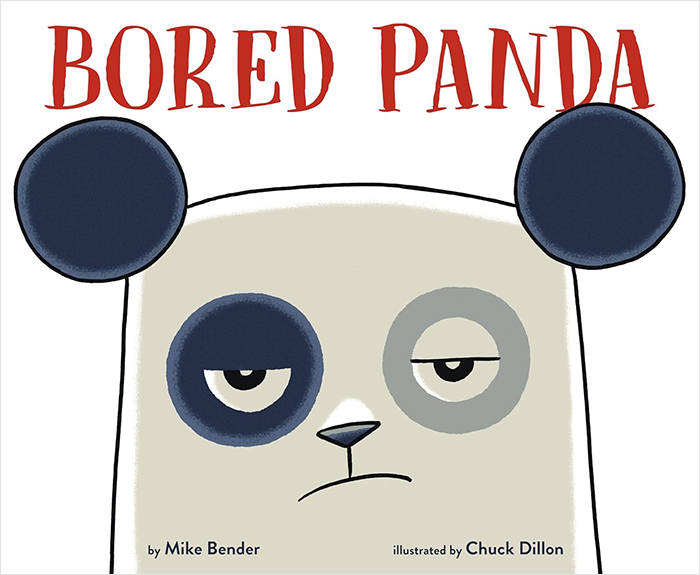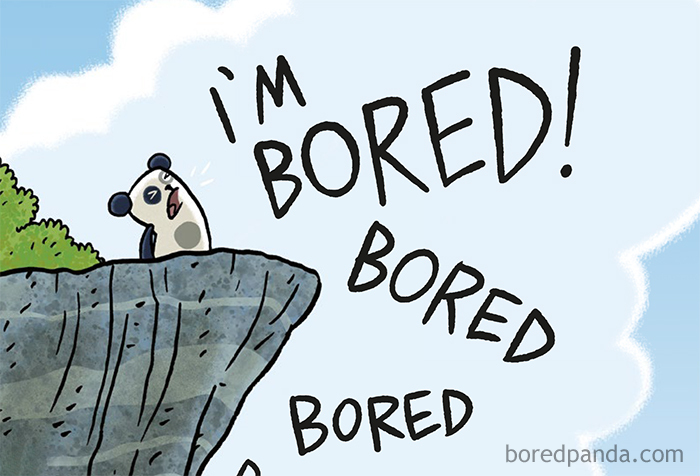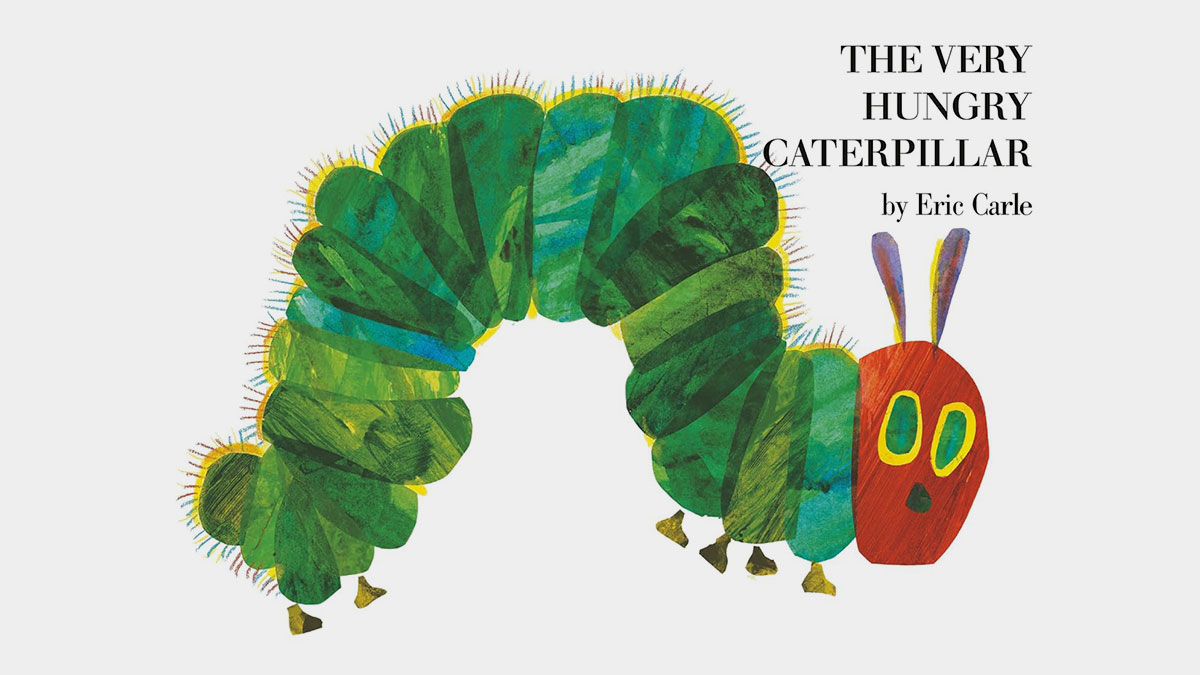Sharing stories with children isn’t just a way to teach letters and sounds—it’s a chance to bond, grow, imagine, and create lasting memories together. Stories help little ones dream freely and feel safe. And yes, they’re fun for grown-ups, too.
To mark the debut release of Bored Panda’s first-ever children’s book, hitting shelves on April 29 from Penguin Random House, we’ve put together a list of inspiring reads we adore.
They might become your child’s new favorite… or yours. Because deep down, we’re all just big kids trying to keep boredom away.
Reading helps kids grow, imagine, and connect away from screens

Image credits: Mike Bender, Chuck Dillon
That’s why Bored Panda is releasing its very first children’s book on April 29

Image credits: Mike Bender, Chuck Dillon
Preorder here now and help your child discover the joy of embracing boredom!

Image credits: Mike Bender, Chuck Dillon
To celebrate, we collected a list of the most inspiring children's books. Did we miss anything?
This post may include affiliate links.
Journey By Aaron Becker
In this wordless picture book, a lonely girl draws a magic door on her bedroom wall and steps into a breathtaking world of adventure. The intricate illustrations draw kids in, allowing them to “read” the story through pictures, fostering imagination and visual literacy.
Where The Wild Things Are By Maurice Sendak
This classic story follows Max, a boy sent to his room for misbehaving, who sails away to a land of wild creatures and becomes their king. It taps into a child's love of fantasy, adventure, and the idea of escaping to a world where they’re in charge. The emotional undertone also helps kids understand and process feelings like anger, loneliness, and love.
We all know reading with young children matters. But the reality is, it’s not happening as often as it used to.
A 2024 report by the National Literacy Trust (NLT), which surveyed around 2,000 UK parents of children aged 0–5, showed that only half said they’d read with their child at least once a day in the past week. Just a few years ago, those numbers were about 15% higher.
It’s not just toddlers missing out, either. The same organization found that over half of children and teens aged 8–18 don’t enjoy reading in their free time.
The Very Hungry Caterpillar By Eric Carle
A caterpillar eats its way through a variety of foods before turning into a beautiful butterfly. Kids adore the bright, cut-out illustrations, the rhythmic, predictable text, and the fun of "eating" along with the caterpillar. It’s also a great early lesson in metamorphosis, counting, and days of the week.
Goodnight Moon By Margaret Wise Brown
A bedtime staple for generations, this gentle poem says goodnight to everything in a little bunny’s room. The soft illustrations and rhythmic, comforting language create a sense of safety and calm, perfect for winding down at night.
So what makes reading with young children so important—and how can parents make the most of it? To find out, Bored Panda spoke with Meera Mehta, a speech and language therapist and founder of Speech and Language Techniques, an independent therapy practice in London.
Born and raised in Nairobi, Kenya, Meera later moved to the UK to study speech and language therapy at the University of Sheffield. Her journey was driven by a genuine desire to make a difference both in her own life and in the lives of children and families who need support with communication.
“At the heart of everything I do is a deep passion for helping others,” she told us. Now, with over a decade of experience working in the UK and Kenya, Meera continues to bring that same care and dedication to every family she works with.
“As a speech-language therapist, I cannot overstate how powerful reading to children can be—not only for language development but for building the foundation of lifelong communication skills,” she said.
Dragons Love Tacos By Adam Rubin
A hilarious, quirky story that asks the all-important question: what happens when dragons eat tacos with spicy salsa? Kids love the absurd humor, chaotic party scenes, and the silly premise. Perfect for giggle-filled reading sessions.
Don’t Let The Pigeon Drive The Bus! By Mo Willems
When a bus driver takes a break, the pigeon begs the reader to let him drive. He pleads, bargains, and throws hilarious tantrums, creating an interactive experience where kids say “NO!” again and again. It's funny, engaging, and perfect for reading aloud.
According to Meera, these are some of the main reasons why reading regularly with young children can make a lasting difference:
Supporting the growth of vocabulary
Children learn new words through repeated, meaningful exposure. Books introduce vocabulary that may not come up in everyday conversations—words like “enormous,” “beneath,” or “adventure.” “These rich, descriptive words help expand a child’s expressive and receptive vocabulary,” Meera explained.
Supporting speech sound development
Listening to well-formed speech in stories helps children learn how words are pronounced and how sounds are properly articulated. Rhyming books and repetition are especially helpful—they give kids the chance to hear and practice the sounds of language, building phonological awareness, which plays a key role in both speaking confidently and learning to read.
Developing listening and comprehension skills
Storytime also helps children learn how to follow a narrative, make predictions, understand cause and effect, and build listening stamina. “These skills are crucial not only in academics but also in everyday communication and social interactions,” she said.
Encouraging joint attention and interaction
Reading together naturally creates moments for back-and-forth conversation. Asking questions like “What do you think will happen next?” or “How do you think the character feels?” sparks critical thinking and expressive language.
Building social and emotional connection
Books create a safe, gentle way to talk about emotions, relationships, and the world around us. “As therapists, we often use stories to help children understand feelings, resolve conflicts, and navigate social situations,” Meera shared.
Preventing language delays
Reading regularly from a young age can also help prevent or reduce language delays. Children who are read to consistently are more likely to meet developmental milestones on time and enter school with stronger communication skills.
The Snowy Day By Ezra Jack Keats
This beautifully illustrated story captures the quiet magic of a snowy morning, as seen through the eyes of a little boy named Peter. It celebrates simple joys—crunching snow, making footprints, and bringing snowballs home. It resonates deeply with children’s natural curiosity and love for seasonal change.
Not A Box By Antoinette Portis
A young bunny insists that a box is not just a box. It’s a rocket ship, a robot, a mountain, and more. This book celebrates unstructured, creative play, and kids love recognizing their own tendency to turn everyday objects into wild adventures.
One thing to keep in mind is that while reading is wonderful on its own, how and when we read to children also plays a big part in how much they get out of it. And when it comes to timing, the truth might surprise you.
“As a speech therapist, one of the most common questions I’m asked is, ‘When should I start reading to my child?’” Meera shared. “And my answer is always the same: it’s never too early, even from the womb.”
Yes, really.
“By around 25 to 28 weeks of pregnancy, your baby’s hearing is developed enough to recognize sounds, including your voice,” Meera explained. “Research has shown that babies in the womb can hear, process, and remember rhythmic sounds like speech and music.”
Reading aloud during pregnancy helps your baby become familiar with the rhythm and melody of your voice. It supports early auditory recognition, strengthens the bond between parent and child, and lays the foundation for brain development.
Even if they don’t understand the words, the consistent sound of your voice brings comfort and begins the learning journey long before birth.
Last Stop On Market Street By Matt De La Peña
CJ and his grandma ride the city bus across town, encountering people of all walks of life. CJ asks questions about the world around him, and his grandma always finds beauty and meaning. It’s a celebration of community, gratitude, and seeing the good in every situation.
We Don’t Eat Our Classmates By Ryan T. Higgins
Penelope Rex is a T. Rex starting school—but she keeps eating her human classmates! Kids crack up at the outrageous concept, while the story gently teaches empathy, boundaries, and how to be a friend.
And just because your baby is out of the womb doesn’t mean the reading should stop. It’s actually just the beginning.
Newborns are naturally soothed by your voice, and reading aloud helps them tune into the rhythm and emotion in your speech. Even though they don’t understand the words yet, they’re already learning to listen and focus. At this stage, it’s not about the story, it’s about the connection. Whether it’s a black-and-white board book, a magazine, or even your own novel, what matters most is that they hear your voice.
As babies grow, especially between 6 and 12 months, they start to engage more actively. They begin looking at pictures, turning pages, and responding to familiar patterns. Rhyming and repetition help them recognize sounds, and some may even start babbling along—an early step toward speech.
By the time children are around 4 to 8 years old, they’re entering a crucial stage in their language and communication development. According to Meera, this is when they start moving from learning to read to reading to learn.
Books that introduce new vocabulary, use rich and descriptive language, and invite natural questions can make a big impact. Think of prompts like, “What does that mean?” or “Have you ever heard that word before?” There’s also no need to shy away from longer or unfamiliar words. “Just explain them in a simple way,” Meera encouraged.
That’s exactly the age group we had in mind when creating Bored Panda’s very first children’s book. In the story, Panda loses power and suddenly has no screen to rely on. Bored and unsure what to do, he eventually discovers that boredom isn’t such a bad thing, it’s where imagination has the space to grow.
There’s A Bear On My Chair By Ross Collins
A grumpy little mouse just wants his chair back, but the huge, unbothered bear sitting on it won’t budge. The rhyming text is playful and satisfying, and the dramatic expressions make it a delight to read aloud with funny voices.
I Am Enough By Grace Byers
A lyrical affirmation of self-worth and diversity. With empowering lines and radiant illustrations of girls of all backgrounds, this book helps children embrace who they are and treat others with respect.
Reading at this age should also be an interactive experience. According to Meera, encouraging children to engage with the story helps build critical thinking, oral language, and narrative skills.
“Ask open-ended questions like, ‘What do you think will happen next?’ or ‘Why do you think the character did that?’” she suggested. Letting kids predict, explain, and retell the story in their own words supports both speaking and reading comprehension.
She also recommends exposing kids to different types of texts. Fiction, nonfiction, poetry, even comics—each one helps children experience language in a different way. Fiction builds imagination, nonfiction introduces facts and real-world language, and poetry supports rhythm and sound awareness. Graphic novels, meanwhile, can be especially effective for visual learners or reluctant readers.
Comprehension is just as important as decoding the words on the page. “Ask questions that go beyond ‘What happened?’ like, ‘How do you think the character felt?’ or ‘What would you do in that situation?’” Meera explained. “Kids with strong oral comprehension are more likely to become strong readers, even if their decoding takes time.”
“Model clear speech and expressive language,” Meera advised. If a child struggles with certain sounds or grammar, storytime becomes a natural opportunity for gentle correction and repetition. And don’t worry about reading the same book again and again—“Repetition strengthens language pathways,” she said.
The Invisible String By Patrice Karst
A comforting book for children experiencing loss, separation, or anxiety. It introduces the idea that we are all connected by an invisible string made of love—even when we’re far apart. Parents often use it during tough transitions like divorce, moving, or grief.
What Do You Do With An Idea? By Kobi Yamada
A poetic story about a child who has an idea—and learns to nurture it, protect it, and eventually share it with the world. It's a powerful metaphor for creativity, self-trust, and courage, encouraging kids to honor their imaginative thoughts.
To help guide the kinds of questions you ask while reading, Meera suggests looking into the Blanks Levels of Questioning, developed by psychologist Dr. Marion Blank. This framework is widely used by speech therapists and educators to support children’s understanding by matching questions to their developmental level.
Here’s a quick overview of the four levels:
Level 1 – Matching Perception (around 2–3 years and up):
Focuses on naming and identifying. Try: “What is this?” or “Show me the cat.”
Great for building early attention and vocabulary.
Level 2 – Simple Understanding (3–4 years and up):
Encourages description and basic reasoning. Ask: “What is the boy doing?” or “Which one is bigger?”
Helps kids describe, classify, and recognize features.
Level 3 – Early Reasoning (4–5 years and up):
Builds prediction and inference. Questions like: “What will happen next?” or “Why is he wearing a coat?”
Supports comprehension and problem-solving.
Level 4 – Higher-Level Thinking (5–6 years and up):
Encourages abstract reasoning. Try: “Why did she do that?” or “What might happen if...?”
Fosters flexible thinking and deeper understanding.
“Reading at this age isn't just about books—it's about building a child’s voice, confidence, and connection to language,” Meera said. “Whether they’re reading to you, you’re reading to them, or you’re just talking about a book—it all counts.”
The Rabbit Listened By Cori Doerrfeld
After a young child’s tower falls, a parade of animals try to help by suggesting solutions—but only the rabbit quietly listens. This sweet and tender book gives kids an important emotional message: sometimes the best comfort is just being there.

 Dark Mode
Dark Mode 

 No fees, cancel anytime
No fees, cancel anytime 














































































